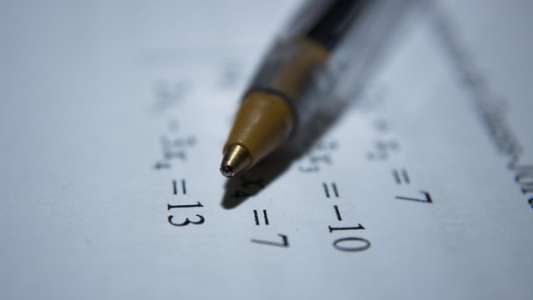Fractions and decimal questions are frequently used in numerical reasoning tests. In this article, we focus on how to convert fractions to decimals and everything you need to know to sharpen your skills when answering these types of questions.
You might be thinking: when will I ever need to convert a fraction to a decimal? Well, it's a pretty useful skill to know. For example, you might need to convert fractions to decimals when measuring out quantities, like ingredients or measuring weights.
Key points to remember
-
A numerator is the number above the line
-
A denominator is the number below
-
The line that separates the numerator and the denominator is a divide symbol
-
To convert a fraction to a decimal, divide the numerator by the denominator.
A fraction represents a number that is between 0 and 1. It is presented as one number on top of another number with a horizontal line between them.
The top number is the numerator, and the bottom number is the denominator. The line that separates the numerator and the denominator represents a divide symbol.
For example:
1 is the numerator and 2 is the denominator. This fraction represents one half.
A decimal represents the same thing as a fraction but is written differently. A decimal is the number 0 followed by a decimal point with a number(s) after it. For example, 0.5 is the decimal equivalent for one half.
You can convert a number from fractions and decimals easily by using the steps below.
Step 1: Find a number that when multiplied by the denominator makes 10, 100, or 1000
Let’s take the above example of ½. When 2 is multiplied by 5, it makes 10.
Step 2: Multiply both numbers by that number
Example: 1 x 5 = 5 then 2 x 5 = 10 = 5/10
Step 3: Take the new numerator and apply a 0 followed by a decimal point before it
Example: 5 is the new numerator. By placing a zero and a decimal point in front of the 5, you get 0.5 – which is equal to ½.
Example questions
Below are two problems that need the fraction to be converted into a decimal. Each uses the three simple steps above and explains how the answer was reached.
Example question 1
Question: What is four-fifths as a decimal?
- First, find a number that when multiplied by 5 will make 10,100 or 1,000. The easiest number to make is 10, which is 5 x 2 = 10. This means 2 is our number.
- Next, multiply 4 by 2 to make 8 and 5 by 2 to make 10. This would give us a new fraction of 8 over 10, or eight tenths.
- Finally, you add a 0. before the numerator (8)
Therefore, the equivalent decimal would be 0.8
Example question 2
What is three-quarters as a decimal?
- Find a whole number that multiplies by 4 to make 10, 100, or 1,000. Unlike in the previous example, you can’t multiply 4 by a whole number to make 10 so you need to make it 100.
- 4 x 25 = 100. This means 25 is our number.
- Next, multiple 3 by 25 and 4 by 25. So 3 x 25 is 75 and 4 x 25 is 100, as we previously worked out.
- Finally, place the 75 behind 0.
That means the equivalent decimal is 0.75

